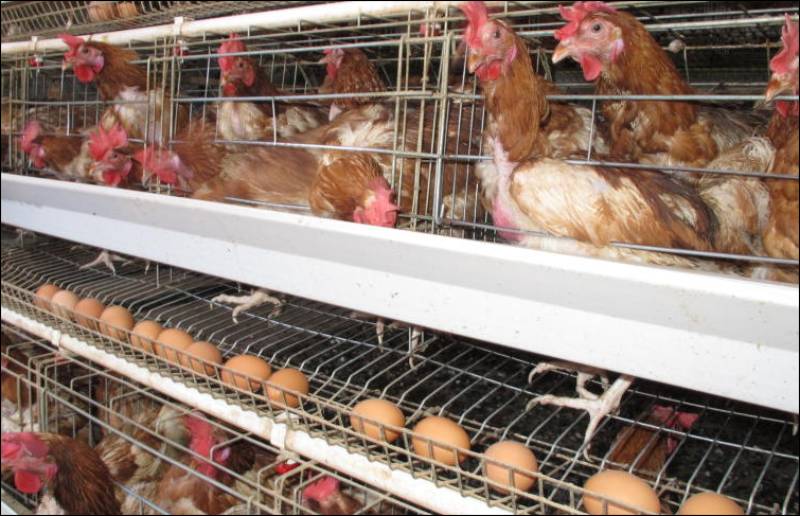Four lethal parasites that can wipe away your entire flock of layers

Dear Dr Messo
I have 300 layers in cages, and they are now a year and eight months old. They produce sufficient eggs which as you know are fetching good market prices now. Recently, I noticed some parasites like mites or fleas and I consulted a neighbour who recommended cattle dip spray. I sprayed the entire population and now am seeing a drop in egg production, yet the insects are still around. What do I do? Concerned farmer, Isinya
Dear concerned farmer, I have had this concern raised among layer farmers and it is good that you have brought it up in this forum.
Ectoparasites are tiny living organisms that live on other animals otherwise called the host. They feed on their tissues or nutrients while patched on the outside skin or feathers. In chickens, these organisms include lice and ticks. They cause production losses, retardation on growth and in severe cases, death. Some act as conduits via which disease-causing organisms are spread into a healthy flock. Here are the most common ectoparasites:
1. LICE
These are common in chicken and turkey. They belong to ‘Mallophaga’ order and spend most of their life cycle in the host. They cause damage by chewing or biting the skin and feathers of chickens but do not suck blood, and in the process cause irritation and discomfort. Using a torch to flush them out, you will find them hidden near the vent or cloacal area of the chickens, breasts and thighs where they lay their tiny eggs or nits.
2. MITES
These are blood sucking organisms which like feeding at night and retire in the daytime in cracks and crevices of poultry units. Due to this nocturnal behaviour, farmers looking for their presence during the day will not spot them. Heavy infestation in layers will cause drop in production and the birds will lose blood and appear anaemic. This is clinically observed by appearance of pale and whitish wattles and combs. Some mites burrow below the skin surface or scales of the feet leading to thickening of affected areas. Backyard indigenous chickens are the main source of these mites into the commercial flocks and it is important that there is a physical barrier between these types of breeds. For bio-security purposes, one should not keep local road runners with this high value commercial stock in one site.
3. FLEAS
Just like lice, flea affect poultry but mainly breed outside the host in crevices and cracks in the poultry unit for months. The larval stages burrow into the skin of the host particularly turkey and cause painful irritation. At slaughter such carcasses are condemned due to reddish blemishes on the skin. The adult flea lives on the soil and is difficult to see them.
4. TICKS
The most common are soft ticks which suck blood at night and spend the daytime hidden in crevices. They cause dip in egg production, increased feed intake, poor weight gain and anaemia. In worse cases they transmit disease causing organisms like Borerelia.
CONTROL MEASURES
Cleaning and disinfection.
The most important control measure is through a foolproof cleaning and disinfection programme which involves complete removal of old litter and disposal 1km away from the site. This is followed by a good wet cleaning using water and detergent that will remove 92 per cent of all the bugs. Terminal disinfection with a potent disinfectant of glutaraldehyde and QAC is good if applied according to manufacturer recommendations.
Biosecurity
Source your chicks from mite or lice free farms, especially if you rely on buying pullets at point of lay. Make sure the birds are transported in clean and disinfected trucks and keep flocks away from each other if they are of different ages. In some cases, these bugs are brought in on contaminated egg trays or crates, make sure these are thoroughly cleaned and disinfected before allowing them into the site for egg collection.
Chemical treatment
Numerous organophosphorus (eg Malathion) compounds are available and can be used on the environment and on the birds. Some acaricides may be toxic for birds or may be traceable in the meat or eggs, so do not use them without consulting your Vet. Sprays are good on treating birds or buildings while dusts are convenient for treating litter.
[For more info contact [email protected] or [email protected]]
Want to get latest farming tips and videos?
Join Us
Share this article on social
 The Standard Group Plc is a multi-media organization
with investments in media platforms spanning newspaper print operations,
television, radio broadcasting, digital and online services. The Standard Group
is recognized as a leading multi-media house in Kenya with a key influence in
matters of national and international interest.
The Standard Group Plc is a multi-media organization
with investments in media platforms spanning newspaper print operations,
television, radio broadcasting, digital and online services. The Standard Group
is recognized as a leading multi-media house in Kenya with a key influence in
matters of national and international interest.
 The Standard Group Plc is a multi-media organization
with investments in media platforms spanning newspaper print operations,
television, radio broadcasting, digital and online services. The Standard Group
is recognized as a leading multi-media house in Kenya with a key influence in
matters of national and international interest.
The Standard Group Plc is a multi-media organization
with investments in media platforms spanning newspaper print operations,
television, radio broadcasting, digital and online services. The Standard Group
is recognized as a leading multi-media house in Kenya with a key influence in
matters of national and international interest.







